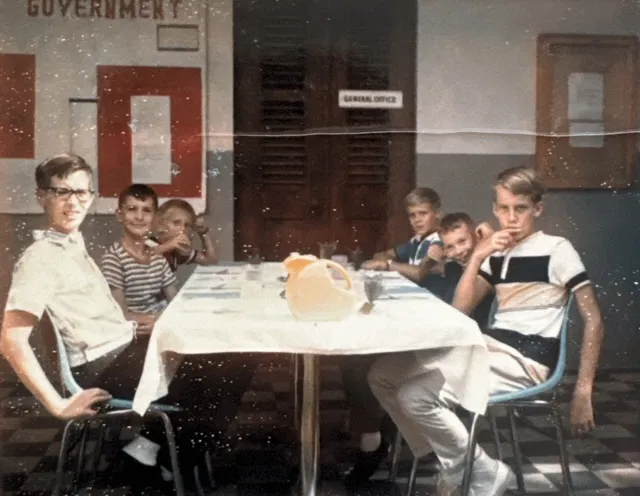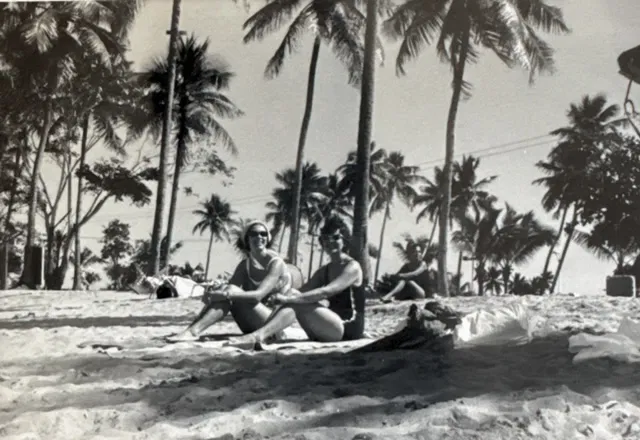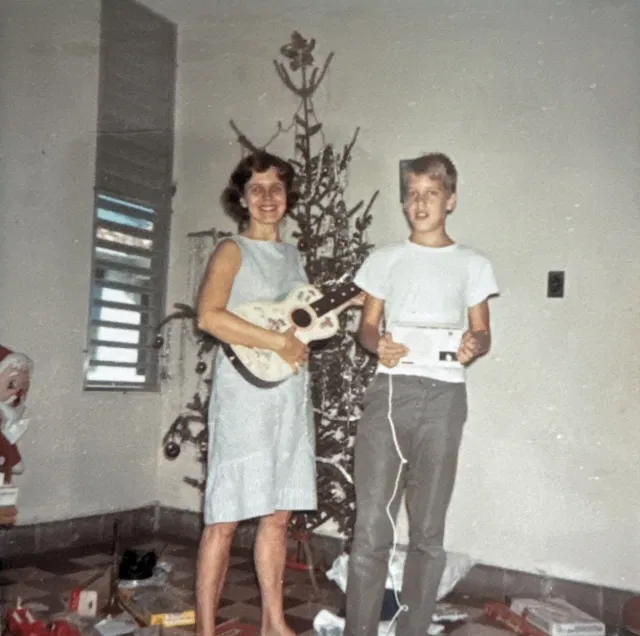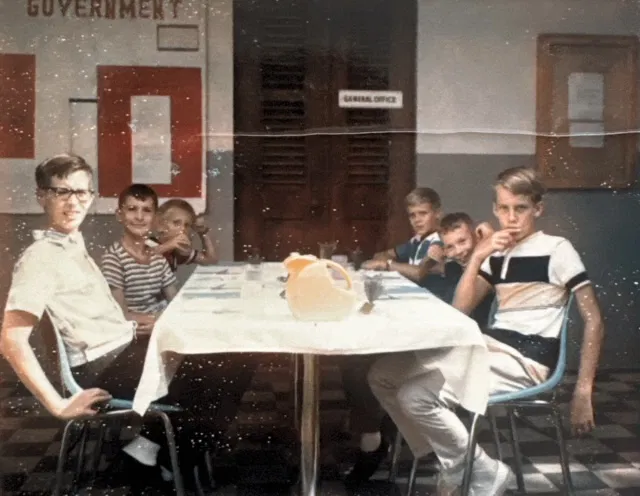
After a very inauspicious start into the world of being missionaries (see the previous story: Even in 1962, It’s a Miracle that Jay’s Parents didn’t end up Divorced), we moved into our new home in Santurce, Puerto Rico, on the second floor of Robinson School, a mission school originally founded by the Methodist Church. It wasn’t remotely what us kids or my parents expected.
First of all, the school’s campus was beautiful and quite large, surrounded entirely by a six foot wall to keep out intruders. All entrances were gated. Our apartment (although it was the school’s former infirmary) was nice too, with four bedrooms, two bathrooms, and a living room basically open floor-to-ceiling on three sides. There were screens but no glass in the windows, but there were wooden slats that were cranked shut whenever a tropical rainstorm hit, which was frequently. The view out the back of our apartment was of the playground and practice football field, which was quite expansive and mainly clay dirt, with scattered patches of grass. To the right there were large tropical trees, including mango trees and rubber trees. When it did rain, it really rained in the tropics, and our backyard would flood with about 5 inches of water, and half an hour later, it was totally dry. We ended up in a pretty snazzy living arrangement for missionaries, and by the way, the ocean was only a block away.

My mother Shirley Shenk and friend Ruth Kutil (December 1966, Robinson School, Santurce, PR)
Even more surprisingly, we soon found out that there weren’t very many actual Puerto Ricans attending Robinson School, and the ones who did attend there were from wealthy families of Spanish descent. Most of the students were the sons and daughters of international businessmen, who were stationed in Puerto Rico for 3-4 years, before being transferred to some other country in South America, or back to the United States. Robinson School, we soon learned, was the top school on the Island, and that virtually no one attending there, excepting the kids of Spanish background, even spoke Spanish.
The school, which was primarily run by deaconesses (the protestant equivalent of nuns) was very strict, and then teachers didn’t spare the rod, or anything else. Kids would get hit over the head with yardsticks for talking, and pulled out of their chairs by their ears for other infractions.
The school did attempt to bring in local kids and teachers from the slums, being that it was supposed to be a mission school, but it never seemed to work out. One kid I remember had a habit of exposing himself if disciplined, so he got expelled in about a week.

My mother and I, Christmas 1963 (Robinson School, Santurce, PR)
We settled in for a four year stay in Santurce, and from this I learned a valuable lesson which most people never learn, because you have to be hit over the head with it to realize it. My mother and I both still harbored this idea that we didn’t want to be in Puerto Rico, and a lot of the other American kids there felt the same way. In fact, my fondest wish remained that I wanted to move back to the family farm in Pennsylvania, where I had so many great childhood memories. This was in spite of the fact that Santurce was a kid’s heaven, particularly in those days.
For example, there were two major circa 1600s Spanish forts in old San Juan, El Morro and San Cristobal, that were just a fifteen minute bus ride away from Robinson, and even though my friends and I were only between 7th and 9th grade, it was completely safe to explore Old San Juan and the Forts. We’d go to a fort, join a tour guided by local Puerto Ricans, hang back in a party of tourists, and soon just slip away to all the closed parts of the forts, going into the dungeons, up to lookout posts…it was an incredible way to spend an afternoon. The Puerto Rican guides couldn’t have cared less where we went, so no one bothered us, and we just had a fine time. The giant toilet area, deep in “the bowels of the forts” and of course off limits for tourists, was just a gigantic half tube that was cleaned by the ocean tides and waves. These forts had hundreds of soldiers stationed in them when they were in actual use.
Another thing that I certainly liked about living in Puerto Rico was surfing. We surfed right in front of these old forts, on waves that were seldom less than 4’ high, and almost no one else in the water. The only thing to worry about out there in the ocean was losing your surfboard and having it wash to shore, near the slums, where many of the poorer Puerto Rican people lived, which were built right down to the ocean’s edge. Any surfboard that washed up on shore was immediately grabbed by local kids, never to be seen again. Happily we were about a football field out in the ocean, so that was a rare occurrence, and at that age we didn’t really think at all about the people in the slums.
My father actually did do a lot of missionary type work while we were there, and one time he took me down into La Perla, one of the largest slums. We didn’t go deep into the slum, but there at the entrance it didn’t look menacing at all, and I know that my father was involved in a church in some way down there.
On days when we couldn’t get to the good surfing spots, my friends and I would just walk to the ocean from Robinson, and surf right there. In those days a lot of ocean front wasn’t developed, so at the ocean near school the beach was covered in dried out seaweed, detritus of all sorts, and typically a bum or two laying around. To get there we walked through a very nice, middle class, Puerto Rican neighborhood. This was in the early 1960’s–I’m sure it’s long gone and high rises have taken its place.
So here I was, living in a kids paradise, thinking I didn’t like living there, and I continued to believe that passionately, right up until the exact moment my father called me into his office and told me we were moving back to central Pennsylvania, to a dairy farm located deep in Appalachia. Ever since, I’ve never completely trusted my own opinions.

Scott Kutil (front left) and me (front right). We reconnected about a decade ago and now get together frequently for oysters and reminiscing.
We both ended up in Massachusetts, despite no other connections to MA.



